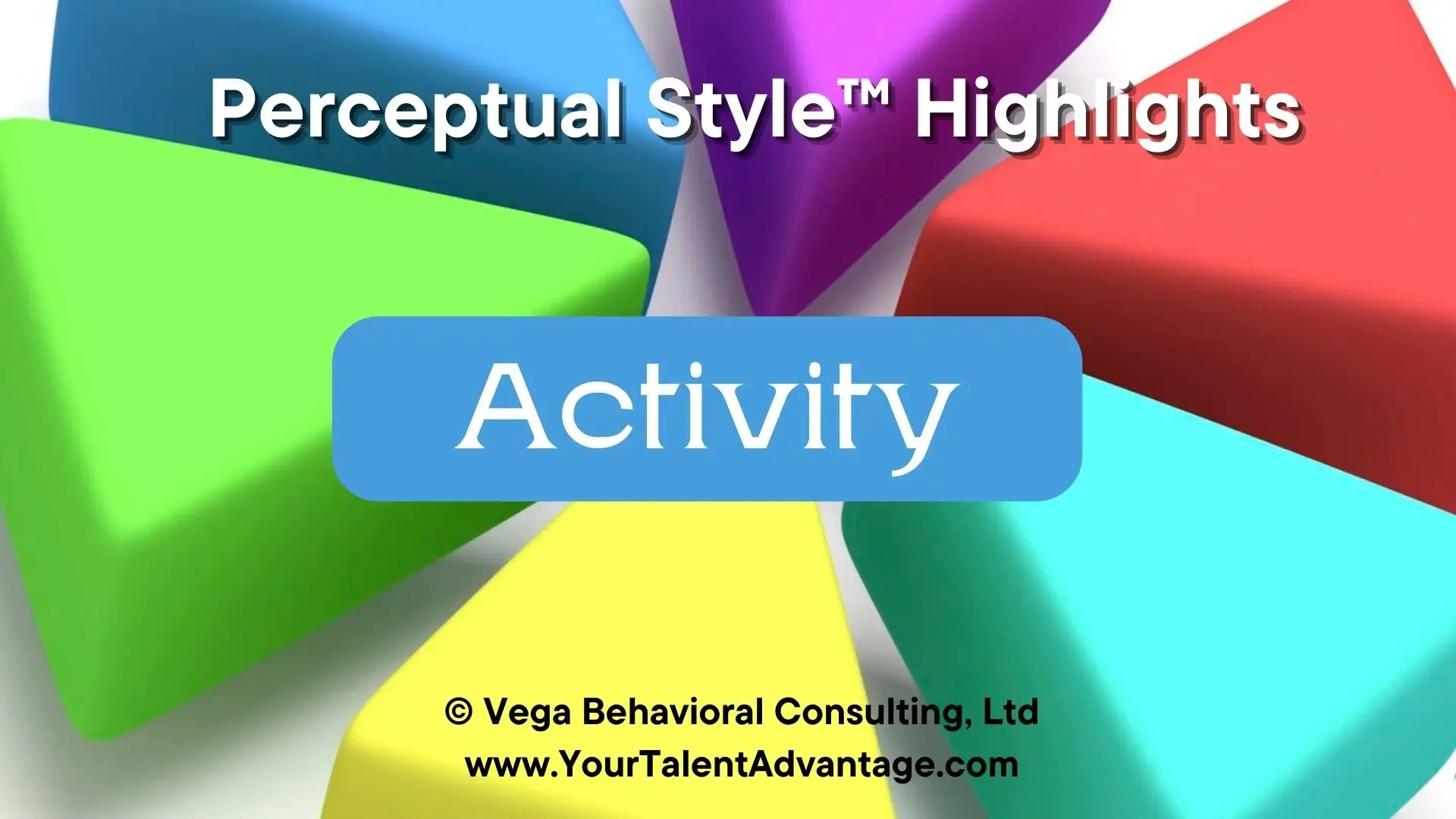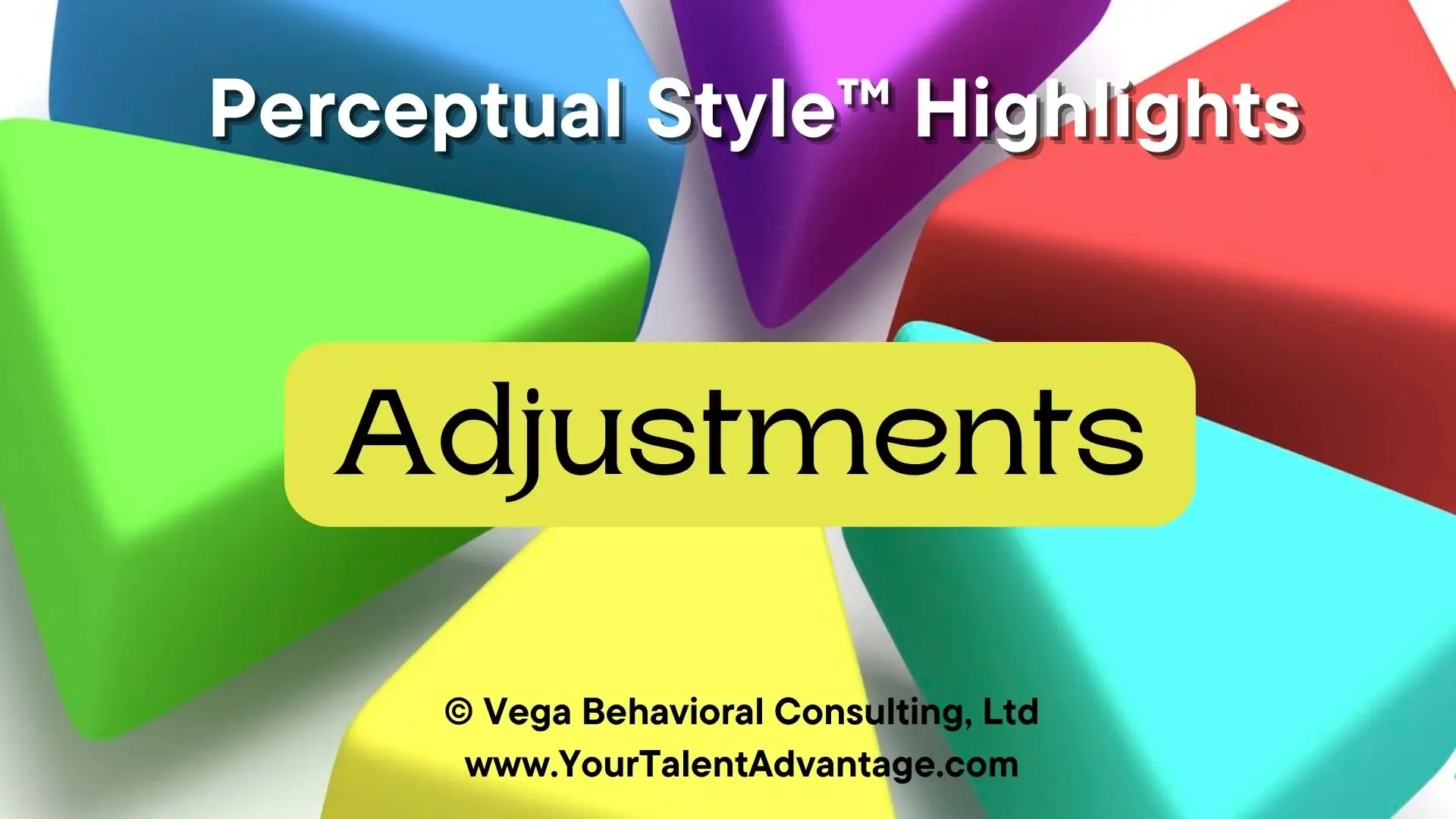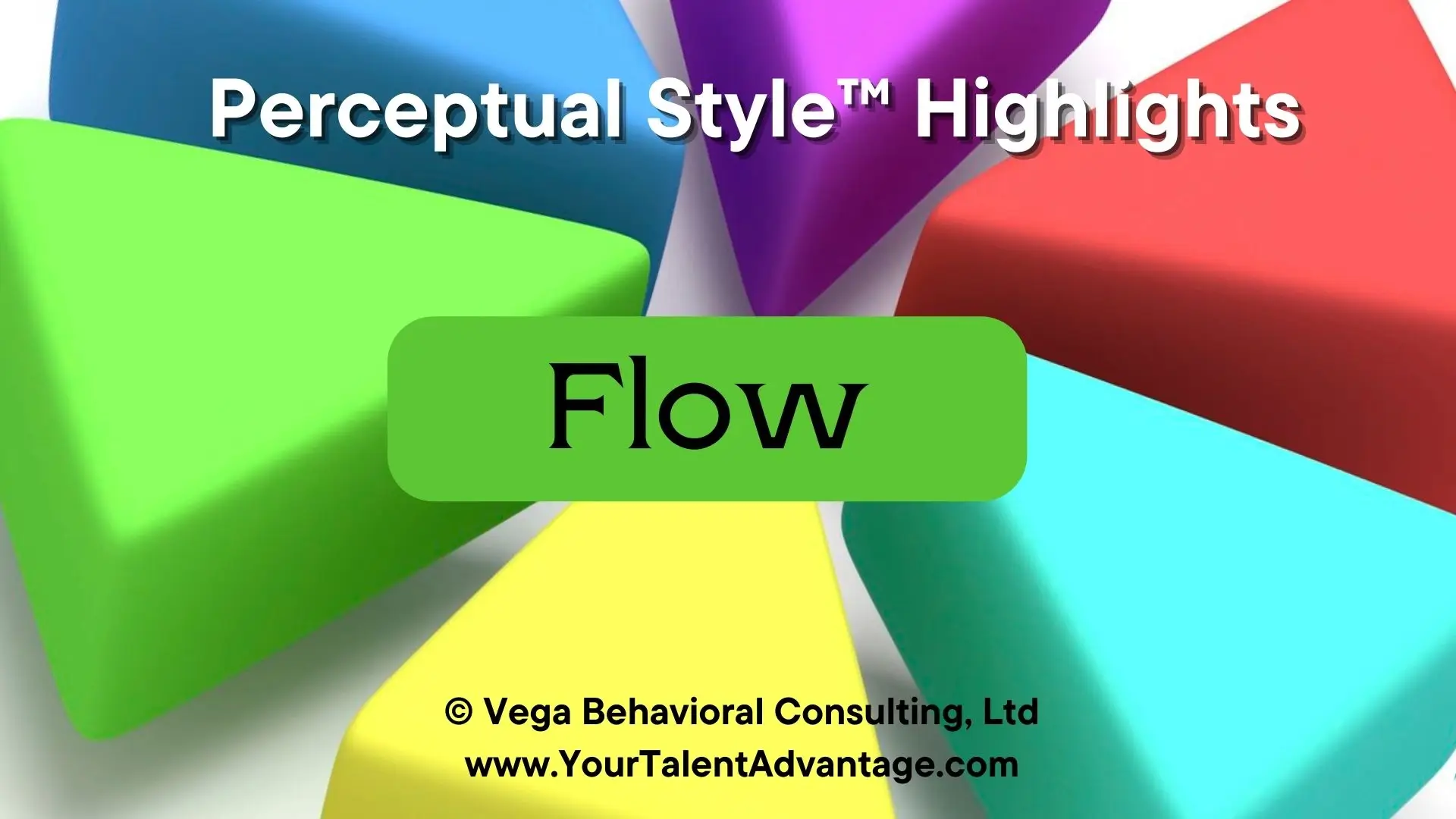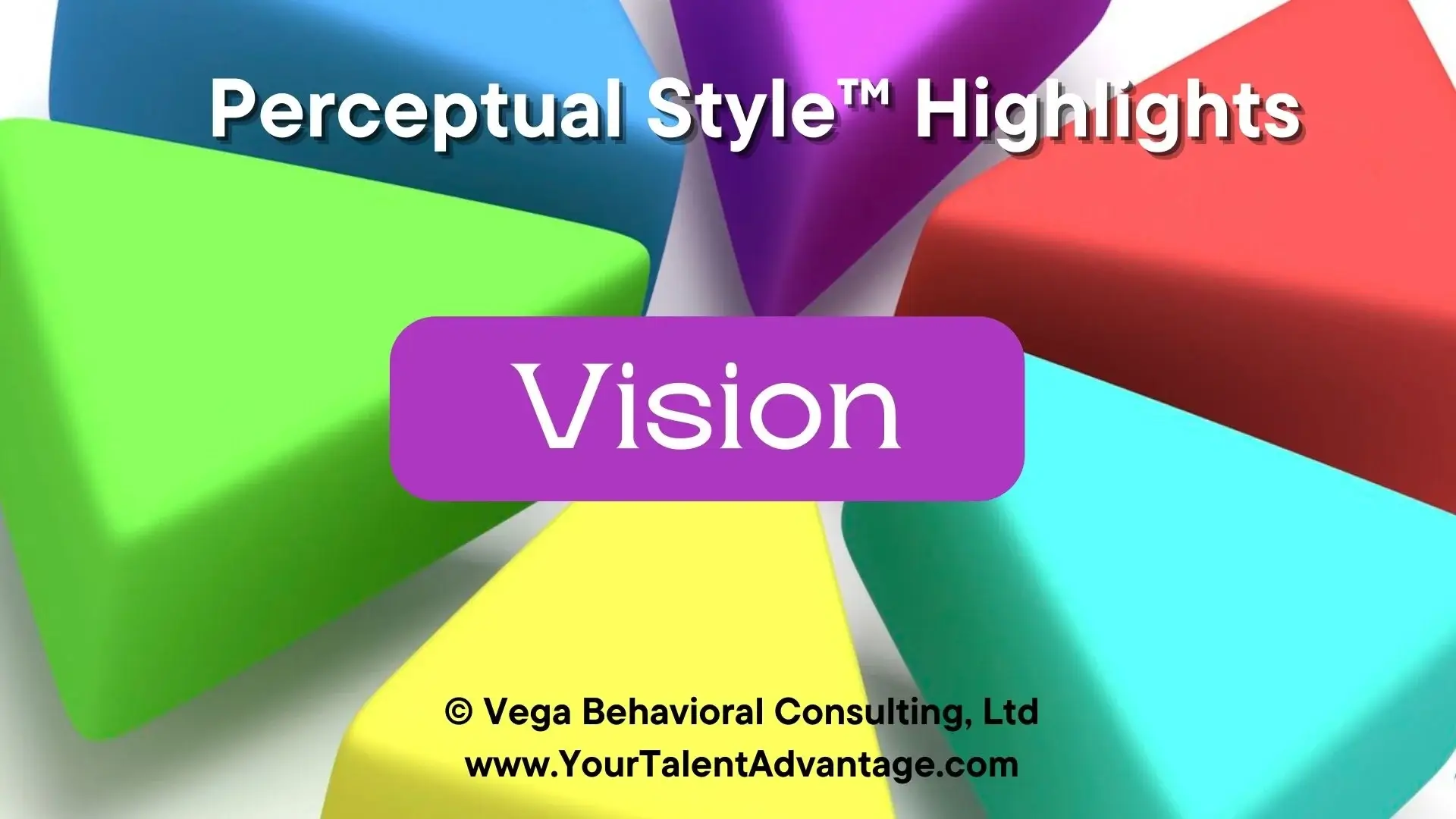
Vision Perceptual Style™ and Collaboration
Inspiring Collaboration with Bold Ideas
Collaboration isn’t just about completing tasks — it’s about sparking ideas, building momentum, and creating a shared sense of possibility. Whether it’s in your workplace, family, or community, collaboration thrives when people are inspired to contribute their best.
But collaboration isn’t one-size-fits-all. Your approach to teamwork is shaped by your Vision Perceptual Style,and you bring energy, optimism, and a forward-thinking perspective to every group you join.
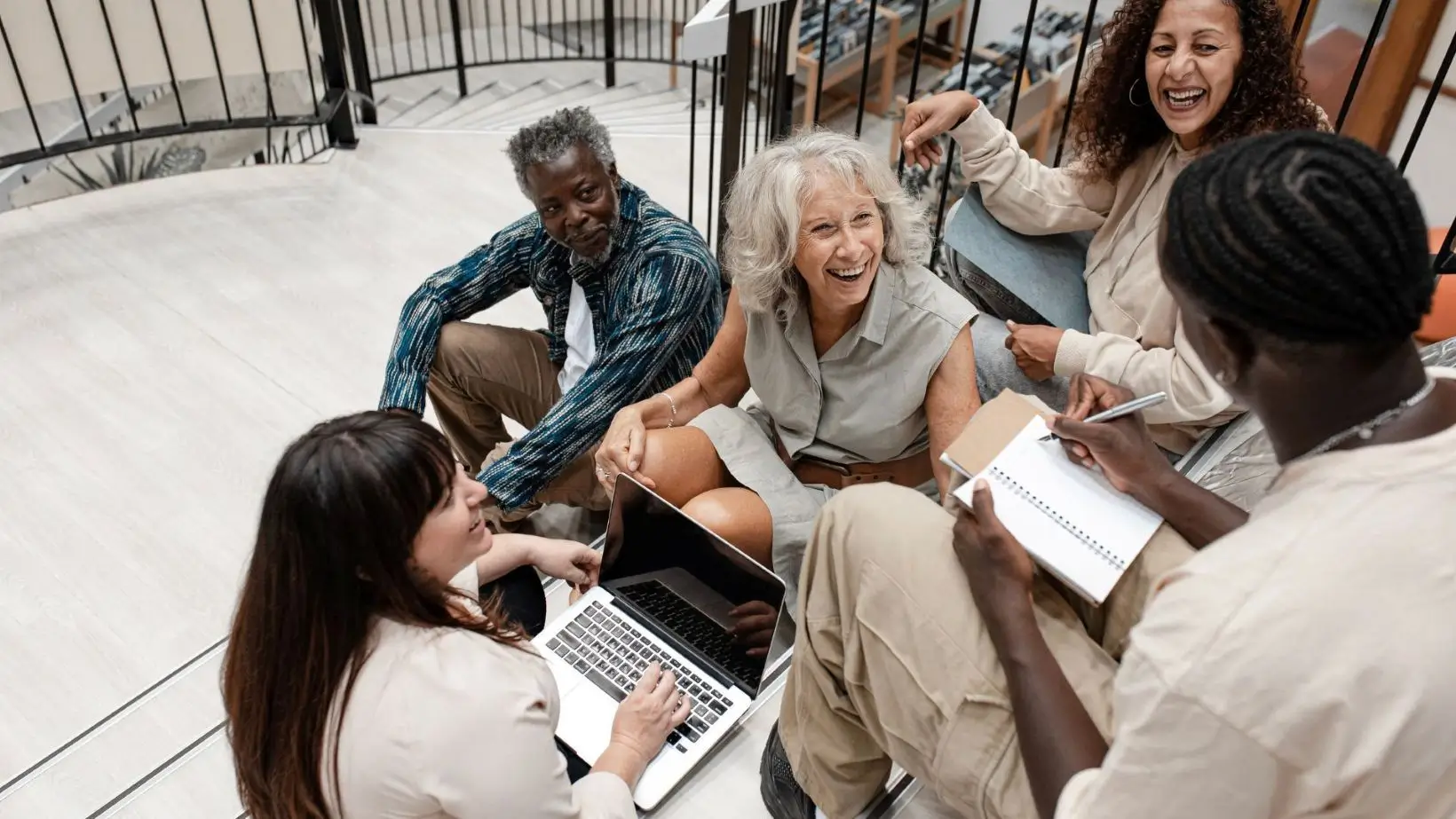
Why Collaboration Matters
As humans, we’re wired for connection. Studies in psychology and sociology consistently show that we thrive in community and wither in isolation.
Collaboration is more than sharing responsibilities — it’s about uniting strengths, fostering creativity, and achieving shared objectives.
When done well, collaboration:
-
Creates shared excitement and purpose.
-
Unlocks creativity through diverse perspectives.
-
Inspires teams to achieve, together.
But let’s face it — collaboration isn’t always smooth. Confusion, lack of direction, or mismatched priorities can create frustration. That’s where understanding your Vision Perceptual Style,comes in.
Your Collaboration Superpowers
With the Vision Perceptual Style,you bring energy, imagination, and possibility to every collaboration. You spark ideas, expand perspectives, and help people rally around a shared sense of purpose.
You thrive in collaboration when you can:
-
Inspire confidence and excitement by offering bold ideas and big-picture thinking.
-
Connect easily with others, treating everyone as equals and encouraging open participation.
-
Recognize people’s potential and motivate them with encouragement and optimism.
-
Shift stale thinking, helping the team break through limits and explore new directions.
Your ability to see potential, reframe challenges, and spark collective momentum makes you a catalyst for breakthrough collaboration.


Why Understanding Your Perceptual Style Matters
Collaboration is one of the most powerful tools for success, but it can stall when teams lack direction, enthusiasm, or a sense of shared purpose.
But when you understand your Vision Perceptual Style,you can:
-
Leverage your natural strengths to energize and align teams.
-
Avoid frustration by recognizing when others may need more details to see what you already envision.
-
Inspire people with optimism and a clear sense of possibility.
-
Create environments where creativity and innovation thrive.
When you lean into your strengths, collaboration becomes a launchpad for fresh ideas, shared excitement, and extraordinary outcomes.
Take Action: Discover Your Perceptual Style
The Perceptual Style Assessment™goes beyond simply identifying your collaborative strengths — it shows you how to use them effectively in every interaction.
When you take the assessment, you’ll receive:
-
A 45-page Celebrate You! action guide tailored to the Vision Perceptual Style.
-
Clear insights into your natural collaborative strengths.
-
Practical strategies for inspiring and aligning teams effectively.
Stop holding back. Start collaborating with energy, creativity, and unstoppable optimism.

Explore the Six Perceptual Styles and Collaboration
Curious about how different Perceptual Stylesapproach collaboration? Explore below for insights into each unique style::
Understanding your style is just the first step. When you learn to appreciate the strengths others bring to the table, collaboration transforms from a challenge into an opportunity.
Frequently Asked Questions about the Vision Perceptual Style and Collaboration
What does it mean to have the Vision Perceptual Style™?
You live in possibility. You spot openings, connect dots others don’t see yet, and move fast toward what could be. When an idea sparks, you share the picture, invite people in, and start exploring options in real time—learn, adjust, keep going.
What are some of the natural strengths of Vision?
You inspire action. You paint a clear, exciting picture of what could be and help others see themselves in it. You simplify complexity, spot opportunities others miss, and stay open to new directions. You’re the one who says, “What if we tried this?”—inviting people to imagine, explore, and move forward with you.
How does the Vision style show up in Collaboration?
You connect people through ideas and shared purpose. You help others see the bigger picture and encourage them to step into new roles or stretch beyond what they thought possible.
What are a few common blind spots—and how can I manage them?
Your speed and certainty can steamroll folks who need time, details, or reassurance. When you sense resistance, try a quick sequence: pause, name what they value (“I get that you feel strongly about this—and I respect that”), then offer two options that preserve movement. Add one anchor—“What’s the next right step for now?”—so your pace doesn’t outrun people’s capacity. And when boredom tempts you to declare something “done,” ask, “What outcome did we actually get?” That keeps results honest.
How can understanding my Vision strengths help me thrive?
Knowing your Perceptual Style helps you channel your creativity and intuition intentionally. You can focus on opportunities that align with your values, inspire others to believe in what’s possible and help bring it to life, and stay grounded through feedback and follow-through. Awareness turns your natural foresight into meaningful impact—helping you not just imagine the future, but shape it.
Can my Perceptual Style change over time?
No — your Perceptual Style is innate. What does evolve is how you apply it. As you grow in awareness and intention, you’ll expand how — and where — you use your natural strengths.
